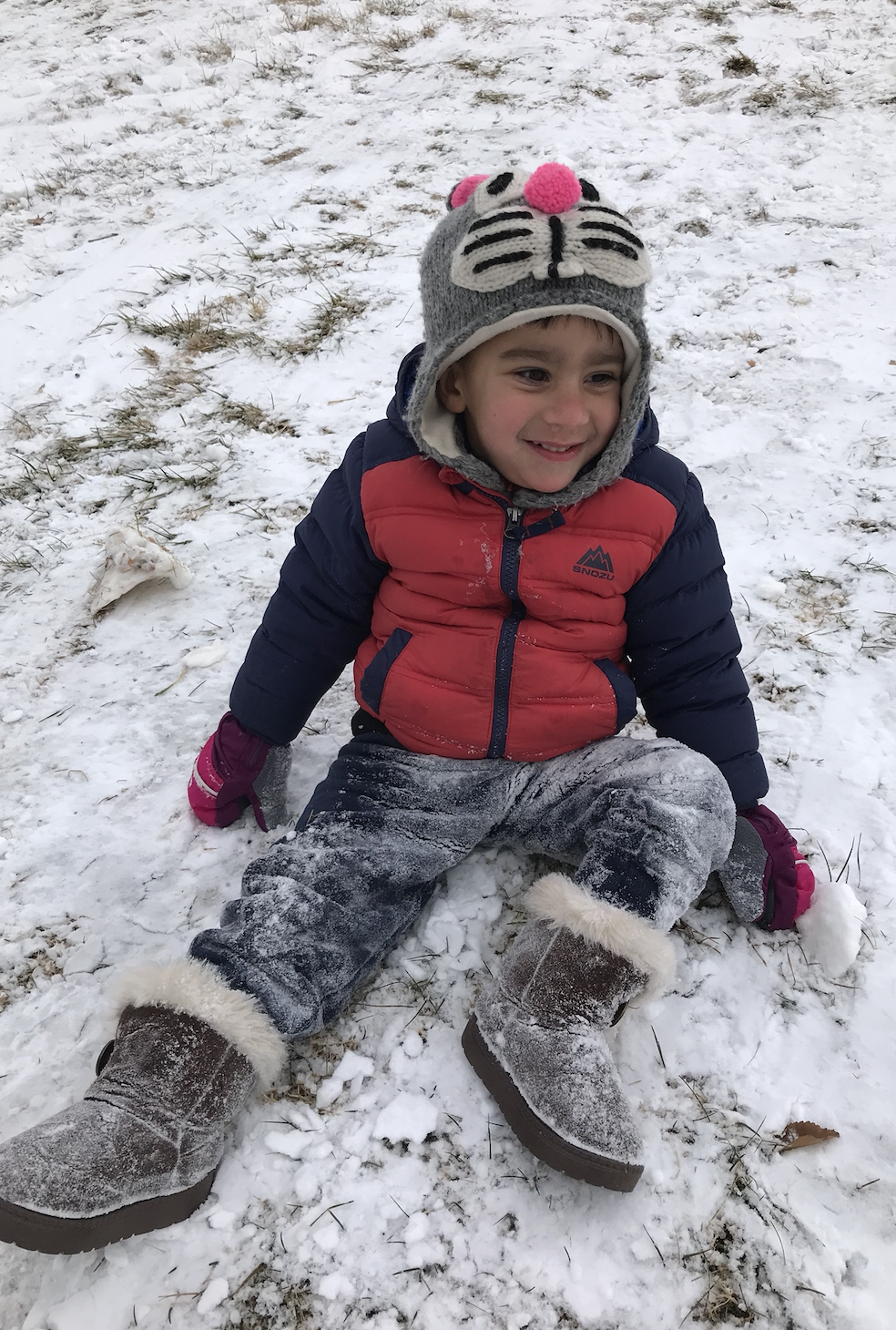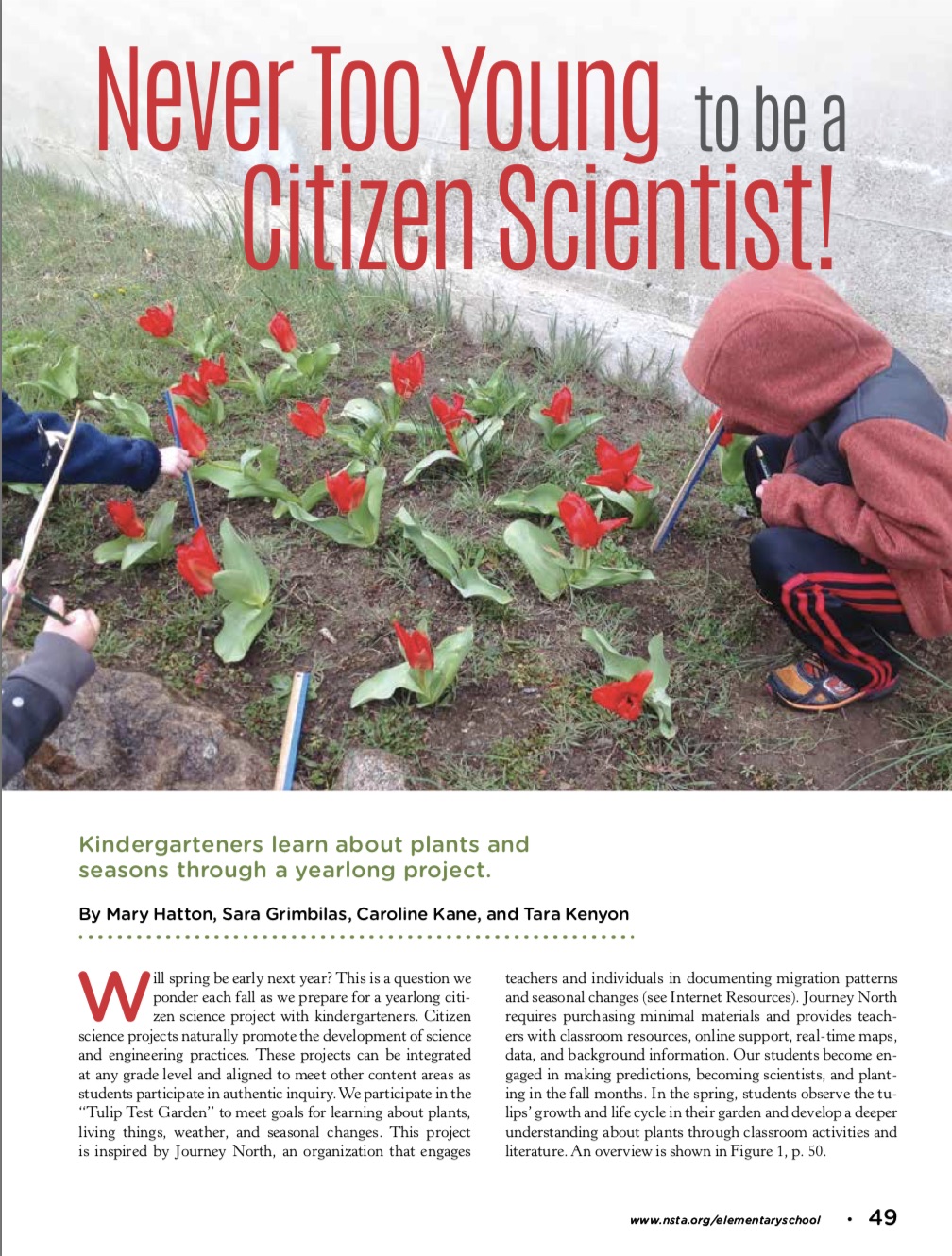100 days of school–weather watching and documenting plant growth
By Peggy Ashbrook
Posted on 2019-12-22
Just as numerals marking the number of in-school days are sometimes posted in one long line stretching across walls of the classroom, weather data can be collected and posted throughout the year. Using symbols that both children and scientists recognize, children can document the weather they experience. Collecting weather data over the year or at least several months will be more meaningful than “doing” weather for a week or taking an occasional nature walk.

See the Early Years column, The Wonders of Weather, in the January 2013 issue of Science and Children and the NSTA Connections archived data collection templates for your children to use as they make actual weather observations outdoors, describe and document them, creating data they can reflect on later to look for patterns.

Seeing the weather observation data represented visually makes it easier to notice patterns in changing temperatures, number of cloudy days, and the relationship between clouds and precipitation. Children’s documented evidence will be a topic of discussion and the basis for developing math skills over time. Arguing for a “claim,” or knowledge statement, based on evidence is described in “Methods and Strategies: Claims and Evidence” by Julie Jackson, Annie Durham, Sabrina Dowell, Jessica Sockel, and Irene Boynton in the December 2016 Science and Children. With wonderful classroom examples they describe how first through fifth grade children learn to make scientific claims based on their evidence. Instead of asking “Why?” to prompt children to further explain their reasoning, they suggest teachers ask “Because…?” because it is less threatening and “It invites the children to tell me more, to elaborate upon ideas, to support claim statements with evidence.”

Collecting plant growth data is another way to observe weather. With a title that describes the goal of the article, “Never Too Young to be a Citizen Scientist: Kindergarteners learn about plants and seasons through a yearlong project” (October 2019 Science and Children) authors Mary Hatton, Sara Grimbilas, Caroline Kane, and Tara Kenyon describe how their “Tulip Test Garden” meets goals for learning about plants, living things, weather, and seasonal changes.
The project was inspired by Journey North, with an additional goal of “to help scientists learn when spring happens in our town.” During the months-long project children observe tulip bulbs, learn how to plant them, measure plant growth and record it with drawings and tally charts, learn about parts of plants, engage in science talk, raise their own questions, make inferences, explanations, and predictions, notice patterns, and compare data from previous years with their data to discuss the timing of spring. The authors note that over time, “students become more independent, helping to give out rulers, measuring, and sharing data on their own,” an additional reason to engage children in an on-going long term science project.
“The long-term nature of this project allows teachers to model doing and thinking about science and for students to become self-sufficient using them. Citizen science supports the development of both content and practices supporting science literacy for next generation scientists—even as early as kindergarten.” — Mary Hatton, Sara Grimbilas, Caroline Kane, and Tara Kenyon
Observing and documenting weather and changes to plants (phenology observations) over several months and seasons can begin at anytime during the year. See citizen science projects of many kinds around the world at SciStarter, an online community dedicated to improving the citizen science experience for project managers and participants. Search for projects that you and your students can participate in by using the project finder and specifying your requirements and preferences for age group, topic, and area of the world. Observe and document ants, buds, dogs, clouds, eelgrass, fish…
Other sites to find citizen science projects to participate in include California Academy of Sciences, Friends of the Assabet River National Wildlife Refuge, Iowa Conservation Education Coalition, Mass Audubon, and Nature Groupie among others. Search citizen science projects to find one that fits your students and will support them in using science practices along with opportunities to develop their literacy and math, and other skills.
Disclaimer: The views expressed in this blog post are those of the author(s) and do not necessarily reflect the official position of the National Science Teaching Association (NSTA).


